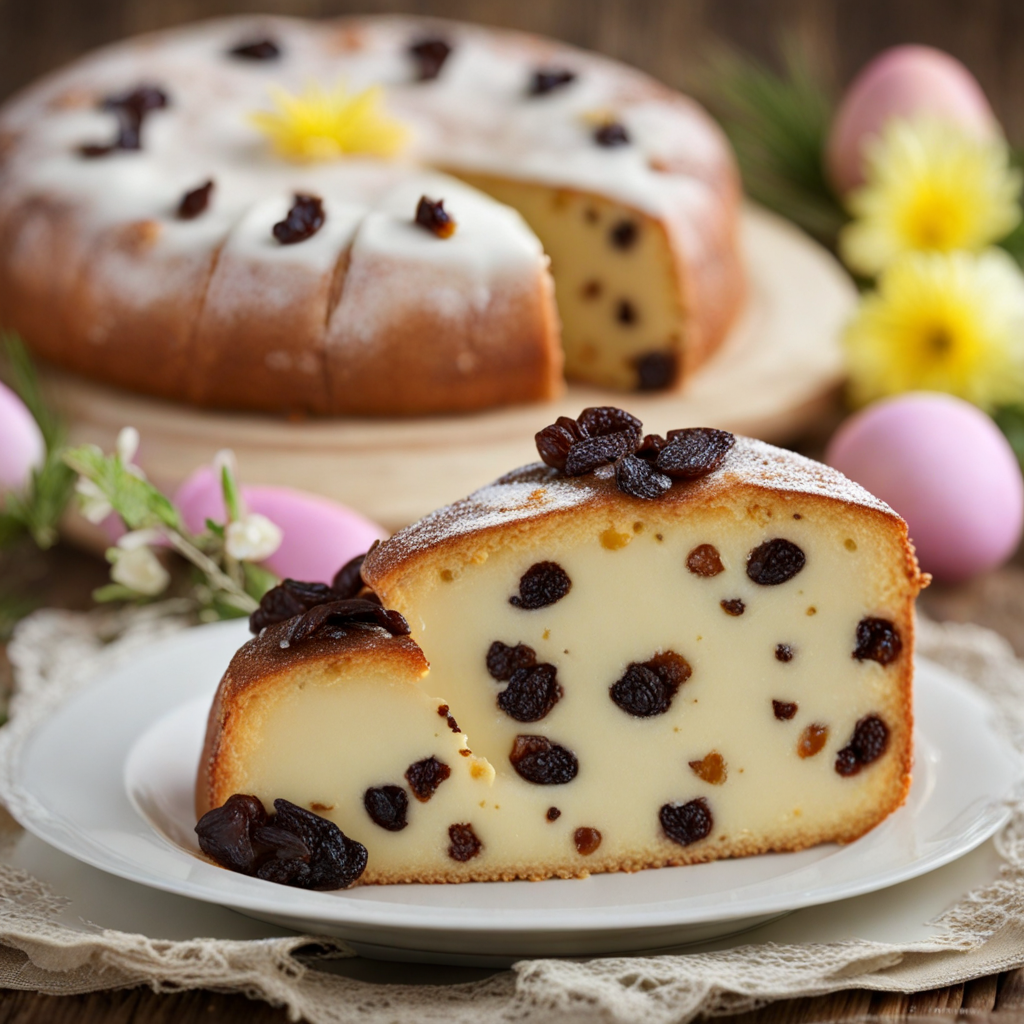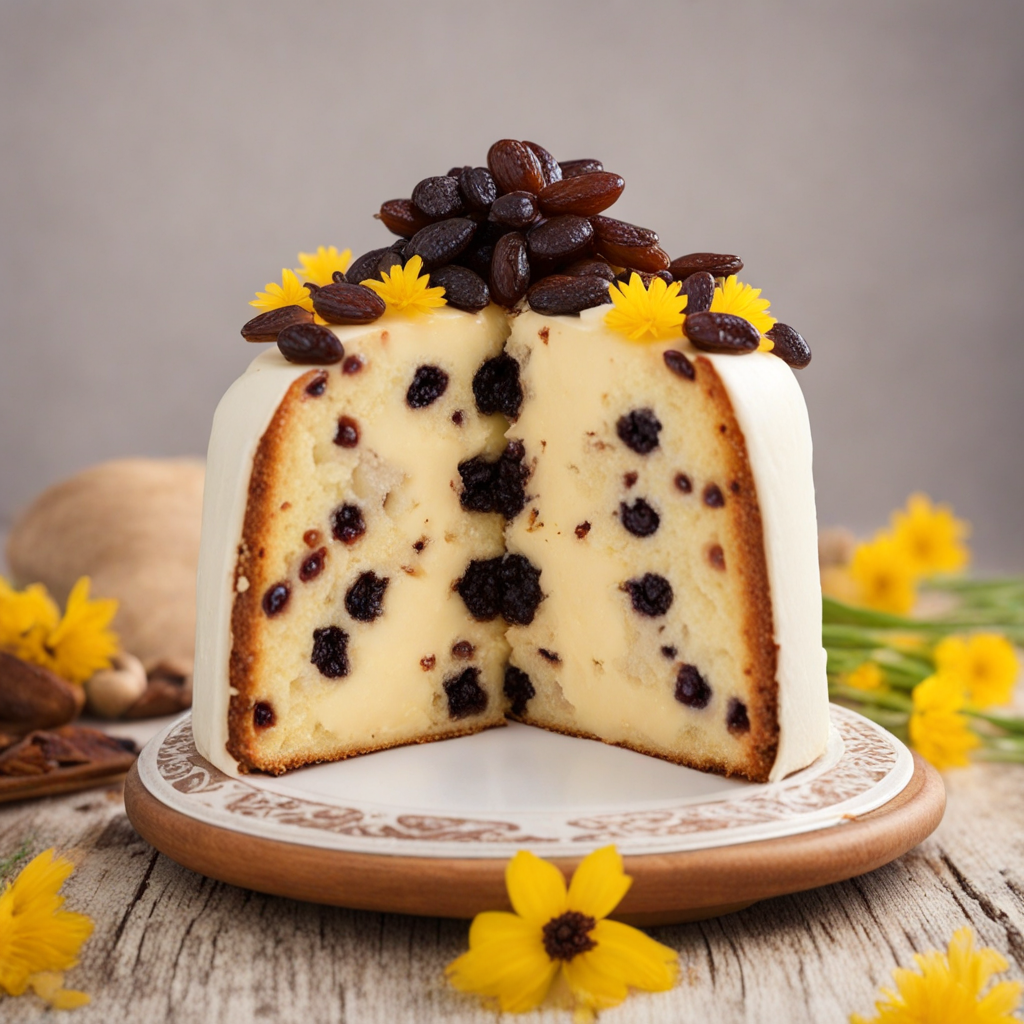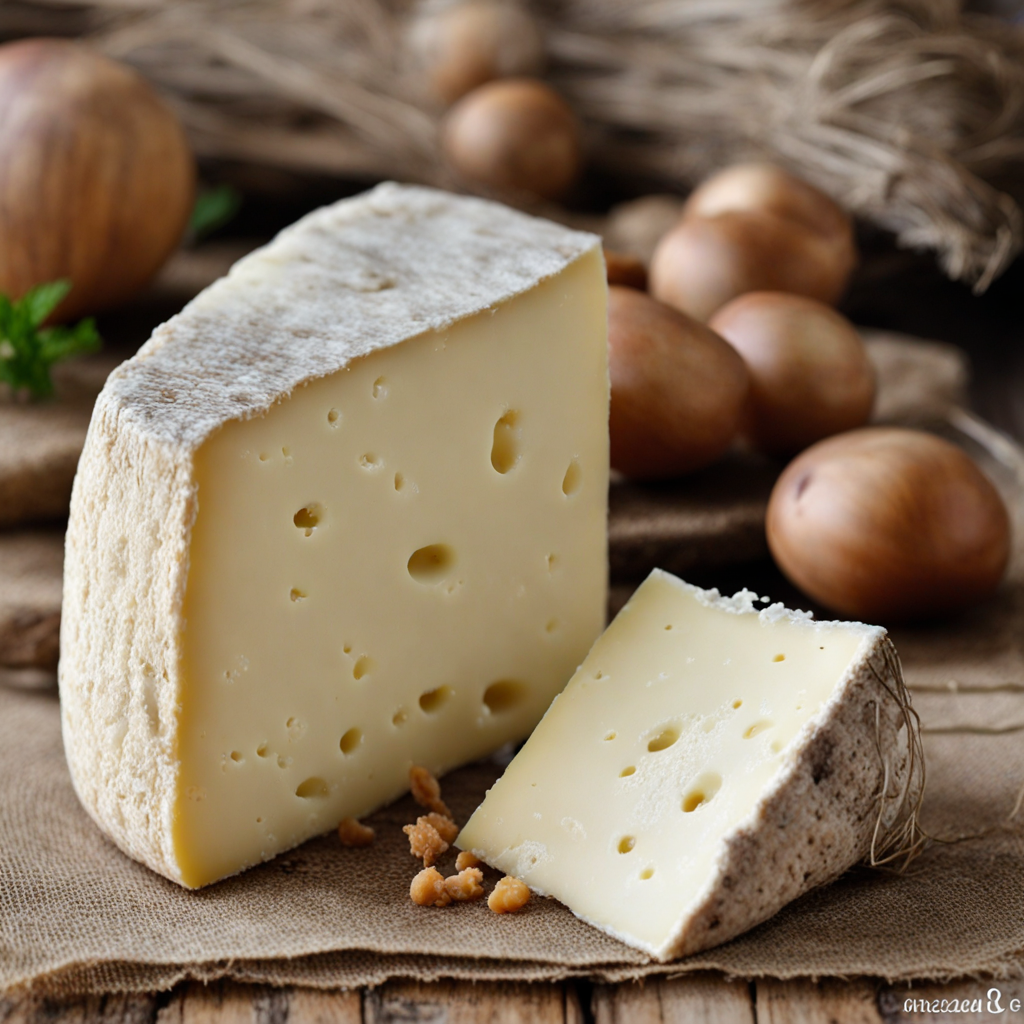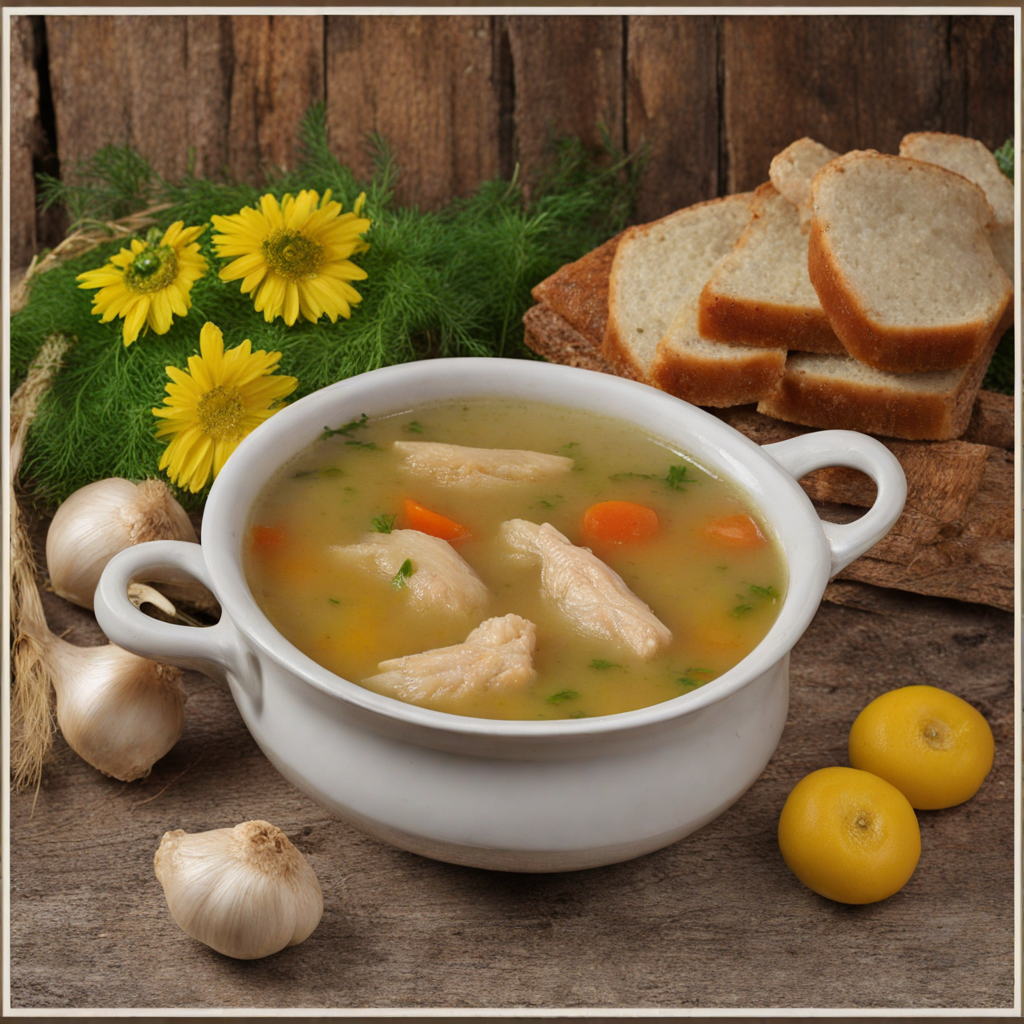Pască
Pască is a traditional Moldovan dish that embodies the rich culinary heritage of the region, often enjoyed during Easter celebrations. This sweet bread is typically made with a blend of flour, sugar, eggs, and milk, resulting in a soft and fluffy texture that is both inviting and satisfying. The dough is often enriched with butter, giving it a delightful richness, while the addition of ingredients like raisins, candied fruit, or nuts can elevate its flavor profile, adding bursts of sweetness and crunch to each bite. The unique characteristic of Pască lies in its shape and presentation. Traditionally, it is formed into a round loaf, symbolizing the cycle of life and resurrection, which is particularly significant during the Easter holiday. The top is often adorned with intricate patterns or religious symbols, making it not only a delicious treat but also a beautiful centerpiece for festive tables. Once baked, the bread takes on a golden-brown hue, and its aroma fills the air, enticing anyone nearby to indulge in a slice. When it comes to tasting Pască, one can expect a delightful combination of flavors. The initial sweetness of the bread is perfectly balanced by its rich, buttery undertones, while the hints of citrus zest or vanilla may be present, adding a subtle complexity. Often enjoyed fresh, Pască can be served plain or with a spread of butter or jam, making it a versatile option for breakfast, dessert, or a snack. This traditional Moldovan delicacy is not just a food item; it is a celebration of culture and community, inviting all to partake in its deliciousness.
How It Became This Dish
The Enigmatic History of Паска: A Culinary Jewel from Moldova Pаска, a traditional Moldovan bread, embodies both gastronomic artistry and deep cultural resonance. Its origins and evolution reflect the rich tapestry of Moldovan history, where culinary practices often intertwine with social customs, religious beliefs, and seasonal celebrations. This distinctive bread, often sweetened and adorned, stands as a testament to the resilience and creativity of the Moldovan people. #### Origins: A Bread of Faith The roots of Паска can be traced back to ancient Slavic rituals, particularly those rooted in Christianity. The term "паска" itself is derived from the Hebrew word "Pesach," which signifies Passover, indicating the bread's deep-seated connections to religious observance. With the spread of Christianity across Eastern Europe, especially after the Christianization of the region in the 14th century, Паска emerged as a significant symbol during Easter celebrations. In Moldova, Паска is traditionally baked to commemorate the resurrection of Jesus Christ. The act of making this bread is imbued with spiritual significance; it is often prepared with care and devotion, reflecting the belief that the quality of the bread signifies the faith of the baker. Families often gather to create Паска, transforming the baking process into a communal activity that strengthens familial bonds and preserves cultural heritage. #### Ingredients and Symbolism The ingredients used in Паска are not only fundamental to its flavor but also rich in symbolism. Typically, the bread is made from flour, sugar, eggs, milk, and butter, creating a soft, slightly sweet loaf. The incorporation of eggs symbolizes new life and resurrection, while sugar represents the joy of the Easter season. The use of milk and butter is reminiscent of the abundance of spring, connecting the bread to the natural cycle of rebirth and renewal. Pаска often features intricate designs, such as crosses and floral motifs, which are carved or molded into the dough before baking. These embellishments carry spiritual significance, invoking blessings and protection for the household. The distinct shape and decoration of the bread can vary by region, with some families adhering to traditional designs passed down through generations, while others may innovate their own styles. #### Cultural Significance In Moldovan culture, Паска transcends mere sustenance; it is a symbol of hospitality and community. During Easter, it is customary for families to share this bread with neighbors, friends, and the less fortunate, reinforcing the values of generosity and unity. The sharing of Паска is often accompanied by the ritual of breaking bread together, a practice that fosters social cohesion and strengthens community ties. Beyond Easter, Паска is also present at other significant life events, such as weddings, christenings, and funerals. Its role during these occasions underscores its status as a food of celebration and comfort. The bread is often blessed by a priest, and its presence at these gatherings signifies divine favor and protection. #### Development Over Time As Moldova navigated through various historical epochs, the preparation and significance of Паска evolved in tandem with changing societal norms and influences. During the Soviet era, for example, traditional practices were often suppressed, and many customs surrounding Паска were altered. The bread became more standardized, and the rich variety of regional recipes began to diminish as mass production took over. However, following the fall of the Soviet Union in 1991, there was a resurgence of interest in traditional Moldovan culture and cuisine. Bakers began to revive ancestral recipes, experimenting with flavors and techniques while still honoring the bread's original significance. Modern interpretations of Паска now often incorporate local ingredients, such as nuts, dried fruits, and even unique flavorings like lemon zest or cardamom, showcasing the adaptability and creativity of contemporary Moldovan bakers. In recent years, as Moldova has sought to assert its national identity, Паска has been re-embraced as a symbol of cultural pride. Festivals celebrating traditional foods have emerged, with Паска often taking center stage. These events not only highlight the bread’s historical importance but also serve as platforms for local artisans to showcase their craftsmanship and connect with younger generations. #### The Global Stage With the Moldovan diaspora spreading across the globe, Паска has found its way into international culinary landscapes. Moldovan expatriates take pride in sharing their traditional bread with their new communities, often introducing variations that reflect the ingredients and tastes of their adopted homes. This cross-cultural exchange enriches both the Moldovan identity abroad and the culinary diversity of the host countries. In many ways, Паска embodies the essence of Moldovan culture—its resilience, adaptability, and deep-rooted connections to both the past and present. As it continues to evolve, the bread remains a beloved staple, symbolizing not only religious observance but also the enduring bonds of family and community. #### Conclusion: A Living Tradition The history of Паска is not merely a chronicle of ingredients and recipes; it is a narrative woven into the very fabric of Moldovan life. From its origins as a sacred bread of resurrection to its role in contemporary celebrations, Паска serves as a reminder of the importance of tradition in an ever-changing world. As Moldovans continue to embrace their culinary heritage, Паска stands as a beacon of cultural identity, inviting all to partake in the joy of sharing, celebrating, and savoring the flavors of life. In every loaf of Паска, there lies not just the essence of flour and water, but the spirit of a people who have, through centuries, baked their history, faith, and love into each golden crust.
You may like
Discover local flavors from Moldova







